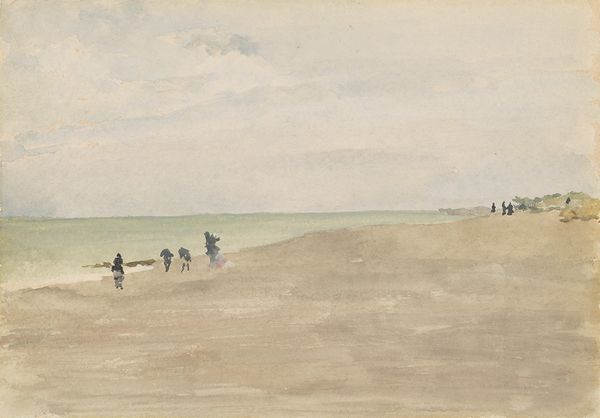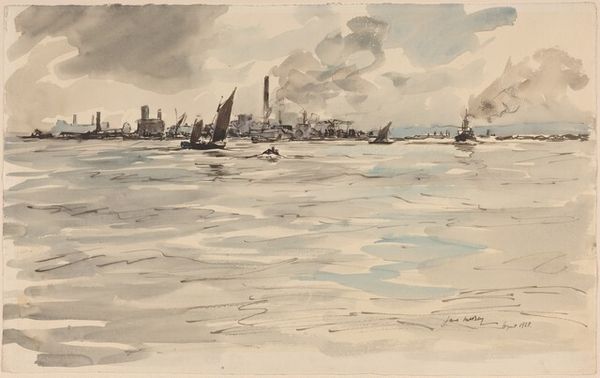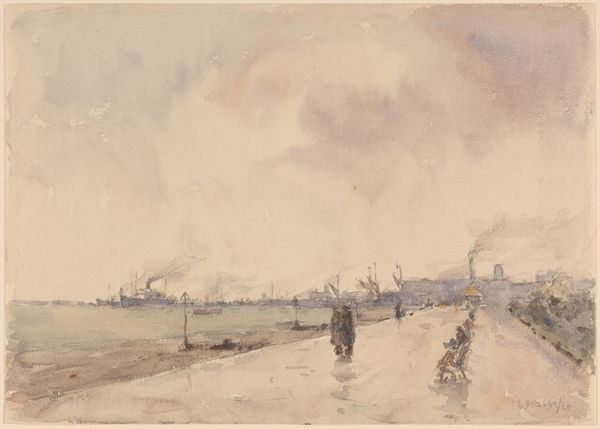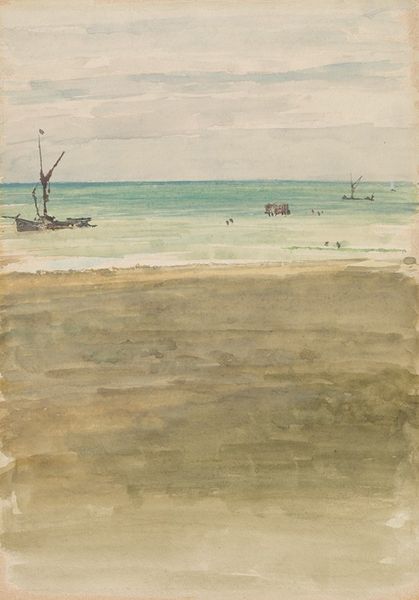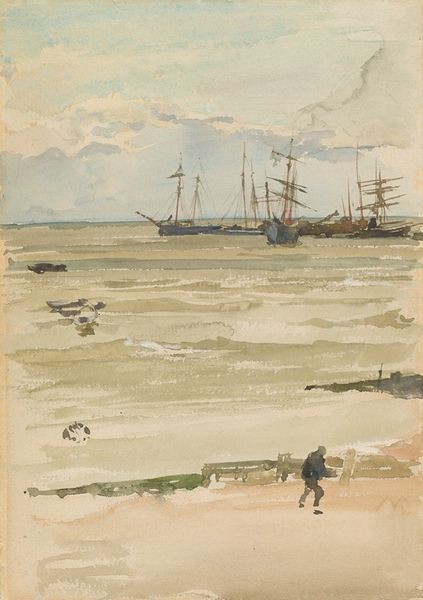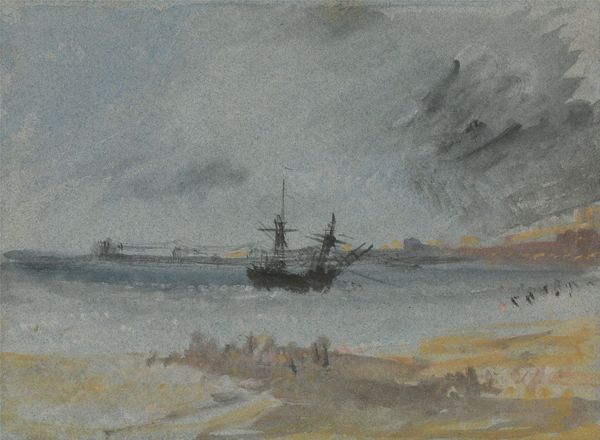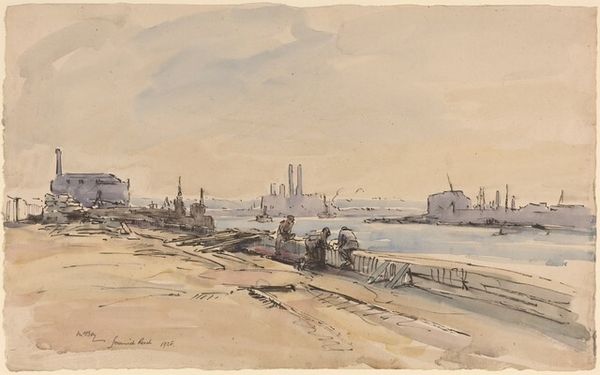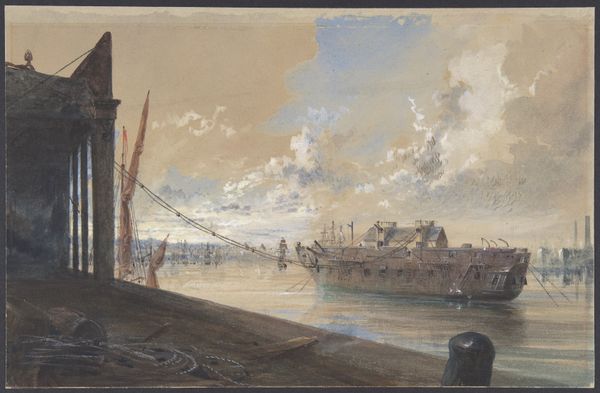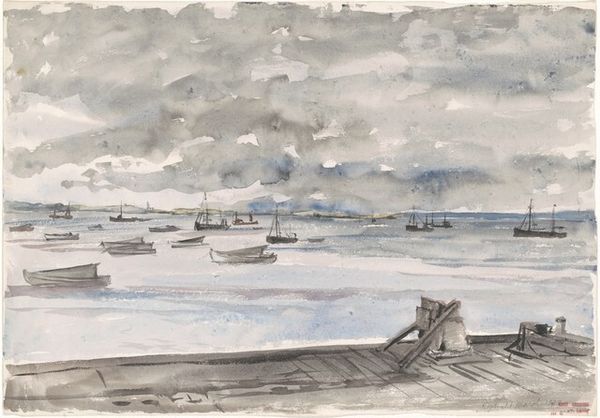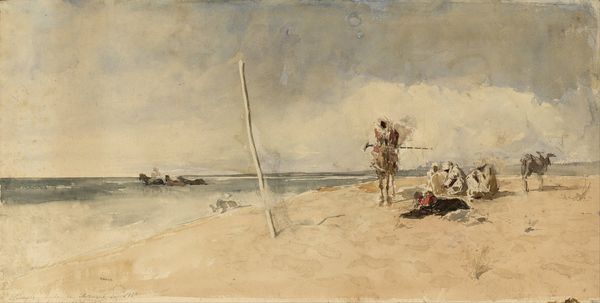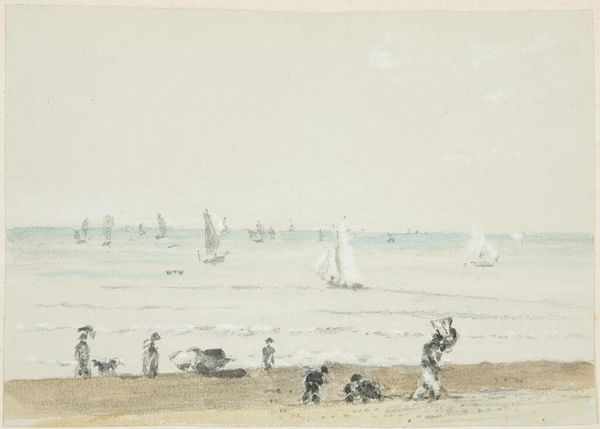
painting, watercolor
#
art-nouveau
#
painting
#
impressionism
#
landscape
#
oil painting
#
watercolor
#
cityscape
#
mixed medium
#
modernism
Copyright: Public Domain: Artvee
Editor: Here we have James Abbott McNeill Whistler's "The Mouth of the River," painted between 1881 and 1883. It appears to be a watercolour and mixed media piece depicting a somewhat industrial coastal scene. The colour palette feels very muted, almost melancholic. What is your interpretation of this work? Curator: That's a perceptive initial reading. I see this as Whistler engaging with the changing urban and industrial landscape of the late 19th century. The billowing smoke stacks and array of ships signals both commercial power and hints at the pollution associated with rapid industrialization. Editor: The way you describe it really shifts my perspective. How would its initial viewers received it? Curator: Think about the cultural context. Art in this period was often seen as either decorative or documentary, tasked to deliver truth or beauty. Whistler challenges this paradigm by creating an atmospheric piece that hints at narratives of modernity without explicitly glorifying or condemning it. His use of a traditionally domestic medium like watercolor for an industrial landscape adds a layer of social commentary. How do you see the social critique in its style? Editor: Now I understand better! By embracing the subtle atmospheric effect of Impressionism instead of clearly defining edges or delivering details, Whistler leaves it to the viewer to decipher the painting’s statement about modernization. Curator: Exactly! He’s nudging viewers to question the rosy picture painted by industrial progress. Did anything about our talk give you new insights? Editor: Absolutely, I hadn't initially considered how Whistler uses style and subject matter to present social and historical narratives. Thank you for sharing your insights! Curator: It’s a pleasure. Looking closely at the visual strategies artists employ reveals so much about their engagement with historical conditions and societal transformations.
Comments
No comments
Be the first to comment and join the conversation on the ultimate creative platform.
